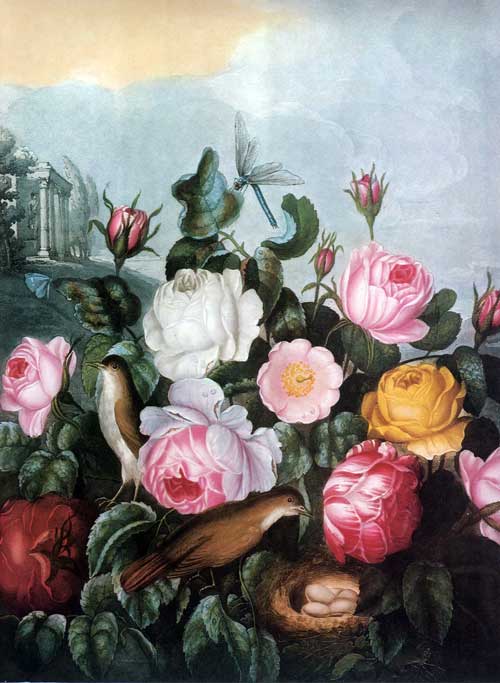Last week I had the pleasure of visiting a private garden on three acres, south…
Nineteenth Century Botanical Art Book Illustrated Social Status

Nineteenth century botanical art book illustrated social status.
Botanical art reveals wondrous details about plants through the eyes of the artist.
Ronald King, former Secretary at the Botanic Gardens in Kew, in his book Botanical Illustration says, “It was not until 1530 that attention was turned fully upon the plant and an effort to draw it as it actually appeared.”
Once interest in the study of botany took off in the eighteenth century, especially with Linnaeus’ triumph in coming up with a system to categorize plants, botanical art also grew.
The English physician Robert John Thornton (1768-1837) became interested in botany and made botanical writing his career.
In 1807 Thornton published a book of botanical art with the title New illustration of the sexual system of Carolus von Linnaeus. He wanted to promote the work of Linnaeus who distinguished plants by their method of reproduction.
The subtitle was Temple of Flora. The book became an important nineteenth century example of botanical art as well social status.
In his book The Reason for Flowers: Their History, Culture, Biology, and How They Change Our Lives Stephen Buchman writes, “The most famous work of botanical scientific illustration of all time is the unique Temple of Flora by Englishman Robert John Thornton.”
Thornton enlisted artists Peter Henderson and Philip Reinagle for most of the twenty-eight paintings in the book called a florilegium but did this painting of the cabbage rose himself. [below]

King defines ‘florilegium’ as a book with portraits of flowers included for their ornamental value.
Buchman writes “The Temple of Flora is properly known as a florilegium, and such books were popular with the wealthy and privileged from the second half of the eighteenth century through the early twentieth century.”
Access to works of botanical art during Thornton’s time was restricted to the more educated and wealthy.
Eventually by the early twentieth century when printing became cheaper and mass education was the norm, books of botanical art were available to everyone.
This Post Has 0 Comments